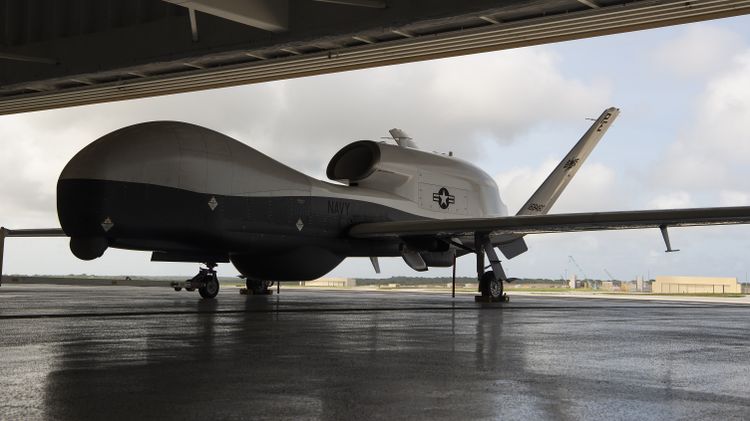The Northrop Grumman unmanned aircraft system MQ-4C Triton has been deployed to the Pacific for the first time.

The deployment of the platform will give the US Navy greater maritime intelligence, surveillance and reconnaissance data to inform critical decision making in one of the most strategically important regions in the world.
Unmanned Patrol Squadron One Nine, or VUP-19, will operate out of Guam as part of Task Force (CTF) 72, 7th Fleet, and is the first squadron to operate the MQ-4C.
VUP-19, nicknamed the ‘Big Red’, was established on October 1, 2013, and later commissioned on October 28 2016.
Getting unmanned systems out in front of manned aircraft and ships in the Pacific is one of the US Navy’s highest priorities.
This is in response to the emergence of China as it has expanded and reinforced its integrated web of sophisticated anti-access/area-denial capabilities in the South China Sea.
Doug Shaffer, Vice President and Program Manager of Triton program at Northrop Grumman, said the deployment was a significant milestone in the MQ-4C Triton program.
“Our partnership with the US Navy has been crucial in developing this system that will help commanders build a better common operational picture,” he said.
Triton’s ability to fly at high altitude and remain airborne in excess of 24 hours allows commanders to surveil a larger maritime area than ever before.
Designed to operate in a manned-unmanned teaming concept, Triton provides viability over massive swaths of ocean and littoral areas, enabling manned aircraft such as the US Navy’s P-8 Poseidon to focus on anti-surface and anti-sub-surface warfare.
The Triton is the US Navy’s newest and most technologically advanced intelligence, surveillance and reconnaissance platform
Its autonomous suite of maritime sensors allows operators to detect, track, classify and identify vessels on the ocean or in the littorals in some of the world’s busiest shipping lanes.
Australia is committed to the purchase of the Triton for the Royal Australian Air Force (RAAF), with the prospect of six aircraft to be added to the RAAF’s inventory as part of the AIR7000 program.
Designed to operate in conjunction with Australia’s planned fleet of 12 manned P-8A Poseidon maritime patrol and anti-submarine aircraft, the Tritons will provide a quantum leap in the nation’s surveillance and reconnaissance capabilities.
The first of the RAAF’s Triton aircraft is expected to be introduced into service in mid-2023, with all six aircraft to be delivered and in operation by late 2025, based at RAAF Edinburgh, South Australia.
The RAAF investment in the Triton program is $1.4 billion.
The facilities and crew required to operate, train and maintain the fleet will be part of the initial $1.4 billion investment, which includes $364 million on new facilities at RAAF Bases Edinburgh and Tindal (in Northern Territory).














